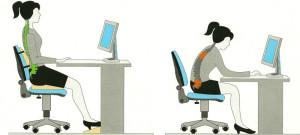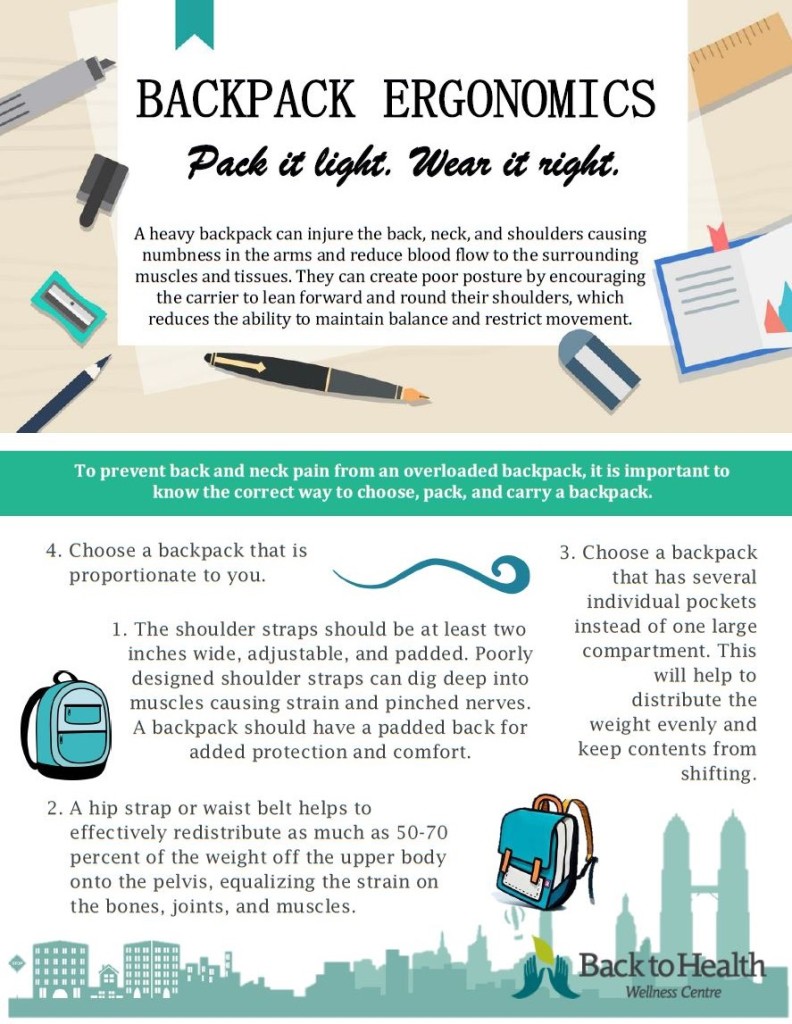Effects of Improper Posture
Posture is an important part of preventing problems ranging from back pain to fatigue. When the back is straight, the spine is supported and stabilized, but as you slouch or practice other methods of poor posture, your spine no longer has the support it needs to stay balanced, leading to many health problems. The most common effect of poor posture is sore muscles and joints. As you slouch, the joints and muscles have to work harder to keep the spine stabilized and protected. The extra work on these muscles can cause muscle tightness and fatigue. This can lead to chronic issues with tight and sore muscles from the neck all the way down to the lower back and restricted joints. Two major muscle groups that bear the brunt of these issues are the flexors and extensors of the trunk, which allow you to bend forward and lift objects. One of the most serious issues that can occur with bad posture is developing a spinal curvature. The human spine has four natural curves that make up an “s” shape. When bad posture is practd to help absorb shock and keep you balanced, but as the spinal position changes, this ability becomes compromised. Once the spinal curve is altered, one major issue that can occur is misalignments or restrictions also known as subluxations. Vertebral subluxations occur when vertebrae become misaligned from the rest of the spine. This affects the overall integrity of the rest of the spinal column. These misalignments can eventually cause chronic health problems including stress and irritation of surrounding spinal nerves.
The human spine has four natural curves that make up an “s” shape. When bad posture is practd to help absorb shock and keep you balanced, but as the spinal position changes, this ability becomes compromised. Once the spinal curve is altered, one major issue that can occur is misalignments or restrictions also known as subluxations. Vertebral subluxations occur when vertebrae become misaligned from the rest of the spine. This affects the overall integrity of the rest of the spinal column. These misalignments can eventually cause chronic health problems including stress and irritation of surrounding spinal nerves.
Quick Facts:
- More than 80% of the neck and back problems are the result of tight, achy muscles brought on by years of bad posture.
- Poor posture can put you at risk for “wear and tear” arthritis, or what is termed degenerative osteoarthritis. Poor posture and limited mobility increase the likelihood of this condition in later years.
- If you have rounded shoulders, head-forward posture, it may affect your bowels. If your spine arches and sways forward, your intestines may sag and cause constipation.
- Sitting in a slouched position at a desk for an extended period of time puts a great deal of stress on your upper body. The most common pain areas include:
- Lower back – 63%
- Neck – 53%
- Shoulder – 38%
- Wrist – 33%
Posture Tips:
- For texting and gaming, hold the phone or device up higher instead of rounding forward and looking down!
- When studying, use books to prop up your notes so that you are not looking down so much!
A New Season – With New Postures!
It’s that time of year again where the hustle and bustle of life can keep us on our toes, and can keep us distracted from noticing how we may be holding ourselves. It’s pretty normal to have new routines to adjust to – new places to go, things to do, and projects to finish, but it’s also important to think of how those new routines are going to affect how we do things. A good example could be a new school year. For students it’s not just about what new classes they may have or what they may be learning in this new semester, but it’s also what they’ll need to bring to class or even how to travel there. Lifting a backpack is pretty hard already, but add a couple of five pound textbooks in there and you could be on your way to a shift in posture to compensate. Even when bringing electronic devices instead of textbooks for class, there are still new postures and habits that we can get into while studying that may cause our bodies undue stress over time. Regardless of the new activity or even old habits we may be continuing, it’s always important to make a mental check list of how we are feeling after the activities. Take note: Are you leaning forward? Are you uncomfortable while performing the activity? Will there be rest times allowed during the activity? What can be altered to make that activity more posturally sound and comfortable? One way to help with seated posture at a desk is to check the height of your chair – both with the table and with the ground. Do you have a hard time touching the ground? Does your chair feel high? Are you lifting your shoulders while typing or reading? Are you having to turn a lot, reach, or strain yourself to do your tasks at that desk? If so, then try to adjust them to make the strain less. An example could be putting a box or foot support under your feet under the table to help ease your low back. Another could be adding a tray for the keyboard to lower it down for your hands and shoulder. By adjusting your posture you’ll help to lessen the overall strain on your muscles and joints, and this in turn will help to give you more energy and less of a chance for injury.
Have your posture checked by one of our staff at Back to Health Wellness Centre!

- Backpack Ergonomics Infographic
- Smartphone Injuries Infographic





